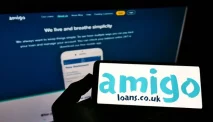Diksia.com - If you are one of the millions of Americans who have student loans, you may be feeling overwhelmed by your debt. Student loans can affect your credit score, your savings, and your future goals. But don’t despair, there are ways to make your student loans more manageable and pay them off faster. In this article, we will cover the latest information and tips on how to manage your student loans in 2024.
Know Your Loans
The first step to managing your student loans is to know what kind of loans you have, how much you owe, and what your interest rates are. There are two main types of student loans: federal and private. Federal student loans are issued by the government and have fixed interest rates, flexible repayment plans, and various forgiveness and cancellation options. Private student loans are issued by banks, credit unions, or other lenders and have variable interest rates, stricter repayment terms, and fewer benefits.
You can find out what kind of loans you have by logging into the Federal Student Aid website1 or checking your credit report. You should also keep track of your loan servicers, which are the companies that handle your loan payments and communication. You can contact your loan servicers if you have any questions or issues with your loans.
Choose the Right Repayment Plan
The next step to managing your student loans is to choose the right repayment plan for your situation. Depending on your income, family size, and loan type, you may qualify for different repayment plans that can lower your monthly payments, extend your repayment term, or even forgive some of your debt.
For federal student loans, you can choose from several repayment plans, such as:
- Standard Repayment Plan: This is the default plan that requires you to pay a fixed amount every month for up to 10 years. This plan will help you pay off your loans faster and save on interest, but it may not be affordable for some borrowers.
- Graduated Repayment Plan: This plan starts with lower payments that increase every two years for up to 10 years. This plan may suit borrowers who expect their income to grow over time, but it will cost more in interest than the standard plan.
- Extended Repayment Plan: This plan allows you to pay a fixed or graduated amount every month for up to 25 years. This plan will lower your monthly payments, but it will increase your total interest and lengthen your repayment term.
- Income-Driven Repayment Plans: These are plans that base your monthly payments on a percentage of your discretionary income and family size. There are four types of income-driven plans: Income-Based Repayment (IBR), Income-Contingent Repayment (ICR), Pay As You Earn (PAYE), and Revised Pay As You Earn (REPAYE). These plans can reduce your payments to as low as $0 and forgive any remaining balance after 20 or 25 years. However, you will have to recertify your income and family size every year and pay taxes on the forgiven amount.
For private student loans, you may have fewer options for repayment plans, depending on your lender. Some lenders may offer deferment, forbearance, or hardship programs that can temporarily pause or reduce your payments in case of financial difficulty. Some lenders may also offer refinancing, which means taking out a new loan with a lower interest rate or a different repayment term to replace your existing loans. Refinancing can help you save money on interest and simplify your payments, but it may also mean losing some benefits or protections from your original loans.
Make Extra Payments
Another way to manage your student loans is to make extra payments whenever you can. Extra payments can help you pay off your loans faster, reduce your interest, and save money in the long run. You can make extra payments by using any extra income, such as bonuses, tax refunds, or side hustles, or by cutting down on unnecessary expenses, such as eating out, cable, or subscriptions. You can also use strategies such as rounding up your payments, paying biweekly instead of monthly, or applying the debt avalanche or debt snowball methods.
When making extra payments, you should specify which loans you want to apply them to and how you want to allocate them. For example, you may want to target the loans with the highest interest rates first, or the loans with the smallest balances first. You may also want to apply the extra payments to the principal, not the interest, of your loans. This will reduce your loan balance and lower your future interest. You can contact your loan servicer or use online calculators to see how extra payments can affect your loans.
Apply for Forgiveness or Cancellation
The last way to manage your student loans is to apply for forgiveness or cancellation programs that can wipe out some or all of your debt. These programs are usually available for federal student loans, but some may also apply to private student loans. Some of the most common programs are:
- Public Service Loan Forgiveness (PSLF): This program forgives the remaining balance of your federal direct loans after you make 120 qualifying monthly payments while working full-time for a qualifying public service employer, such as the government, a nonprofit, or a school.
- Teacher Loan Forgiveness: This program forgives up to $17,500 of your federal direct or Stafford loans after you teach full-time for five consecutive years in a low-income school or educational service agency.
- Perkins Loan Cancellation: This program cancels up to 100% of your federal Perkins loans after you work full-time for five years in certain public service occupations, such as teaching, nursing, law enforcement, or the military.
- Borrower Defense to Repayment: This program discharges your federal direct loans if you were misled or defrauded by your school, such as by false advertising, accreditation issues, or illegal conduct.
- Closed School Discharge: This program discharges your federal direct, Stafford, or Perkins loans if your school closed while you were enrolled or within 120 days after you withdrew.
- Total and Permanent Disability Discharge: This program discharges your federal direct, Stafford, Perkins, or PLUS loans if you are unable to work due to a physical or mental impairment that is expected to last at least 60 months or result in death.
To apply for these programs, you will need to meet certain eligibility criteria, submit an application, and provide supporting documentation. You may also have to pay taxes on the forgiven or canceled amount, unless you qualify for an exemption. You can find more information and resources on the Federal Student Aid website1 or contact your loan servicer.
Managing your student loans can be challenging, but it is not impossible. By knowing your loans, choosing the right repayment plan, making extra payments, and applying for forgiveness or cancellation programs, you can take control of your debt and achieve your financial goals. Remember, you are not alone in this journey, and there are many resources and options available to help you. The sooner you start, the sooner you can be free of your student loans.






